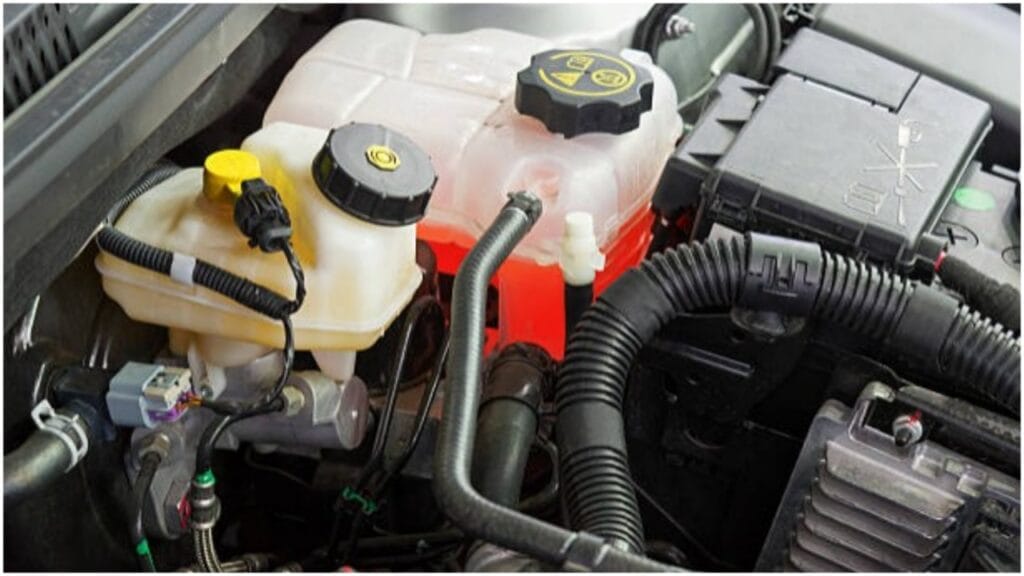A coolant leak under the passenger side of your car can stem from several possible sources. To address the issue, the first step is to identify where the coolant is leaking properly.
The leak could come from various parts, such as the radiator, hoses, water pump, heater core, or coolant reservoir. The leak on the passenger side can often indicate problems with the heater core, which is located behind the dashboard on that side.
Other sources could be hoses running to the radiator or parts of the air conditioning system integrated with the coolant system. You should inspect these areas to locate the exact origin of the leak.
Inspecting the Radiator and Hoses
One common cause of coolant leaks is damaged or cracked radiator hoses. These hoses carry coolant to and from the engine; if any are broken, the coolant can leak out.
Check for visible cracks or wet spots around the hoses, particularly the ones leading to and from the radiator. If the hoses look old, brittle, or damaged, they should be replaced immediately.
You should also inspect the radiator for cracks or damage. A damaged radiator, especially if its body has cracks or holes, can leak coolant.
Inspecting the Heater Core
On the passenger side, the heater core—a small radiator-like device part of the vehicle’s heating system—will likely be the culprit for coolant leaks.
If coolant starts to leak, it can spill onto the car’s passenger side, sometimes showing as a wet carpet or an unpleasant coolant smell inside the vehicle.
This leak can be tricky to fix because it often involves removing parts of the dashboard to access the heater core.
If you suspect a leaking heater core, it’s important to check for signs like steam or mist coming from the vents or a persistent smell of coolant inside the car.
Checking the Coolant Reservoir
Another common source of coolant leaks is the coolant reservoir, a plastic tank that holds excess coolant that the engine doesn’t use.
Over time, these reservoirs can develop cracks, especially if exposed to extreme heat or pressure. If you notice a coolant leak under the passenger side, it’s worth inspecting the coolant reservoir for any cracks or holes.
Inspecting the Water Pump
The water pump circulates coolant through the engine. If a leak develops, coolant can escape and accumulate under the vehicle.
Leaks from the water pump may show as wet spots around the pump area, typically at the front of the engine. If the water pump is leaking, it may need to be replaced.
This is a more involved repair because the water pump is often behind other engine components. In some cases, the repair may require the removal of timing belts or other parts, so it’s important to assess the cost and effort required before proceeding with a water pump replacement.
Checking for Leaks from the A/C System
Coolant leaks under the passenger side can be confused with leaks from the air conditioning system. The air conditioning system uses separate refrigerants, but coolant can leak from a line or component connected to the A/C system.
While A/C leaks are generally unrelated to the engine coolant system, they can sometimes confuse when you notice fluid under the vehicle. Look for any signs of refrigerant oil around A/C lines and fittings.
If the leak comes from the A/C system, this issue will require repairs that are different from those needed for a coolant system problem.
Temporary Solutions for Coolant Leaks

Suppose you discover a coolant leak and are unable to fix it immediately. In that case, a few temporary solutions might help you manage the situation until you can repair the leak.
A radiator sealant can be used as a quick fix for small leaks, especially if it comes from a hose or the radiator itself. This product can temporarily stop the leak by sealing small cracks or holes.
This is not a permanent solution; you must still repair the car properly to prevent the problem from returning.
Repairing the Leak
Depending on the location and severity of the leak, the repair could involve replacing hoses, the radiator, or the heater core.
In some cases, you can repair yourself if you have the necessary tools and knowledge, such as replacing a hose or tightening connections.
For more complex issues like a leaking heater core or water pump, it may be best to take the vehicle to a mechanic. These repairs often require specialized tools and expertise to properly fix the issue and prevent further damage to the engine.
Preventing Future Coolant Leaks
Once the leak is repaired, it’s important to prevent future coolant issues. Regular maintenance of your vehicle’s cooling system is essential for keeping everything in good working order.
Check your coolant levels frequently and ensure they are within the recommended range. If you notice any leaks, such as a sweet smell, puddles of coolant under the car, or fluctuating engine temperatures, address the problem promptly.
Conclusion
Several issues can cause a coolant leak under the passenger side of your car. The key is to carefully inspect the source of the leak, which could be anything from a cracked hose to a failing heater core or water pump.
While some coolant leaks can be temporarily managed, it’s crucial to have the problem repaired properly to avoid engine damage. Regular maintenance and early detection of leaks can help keep your vehicle running smoothly and prevent future coolant-related issues.

